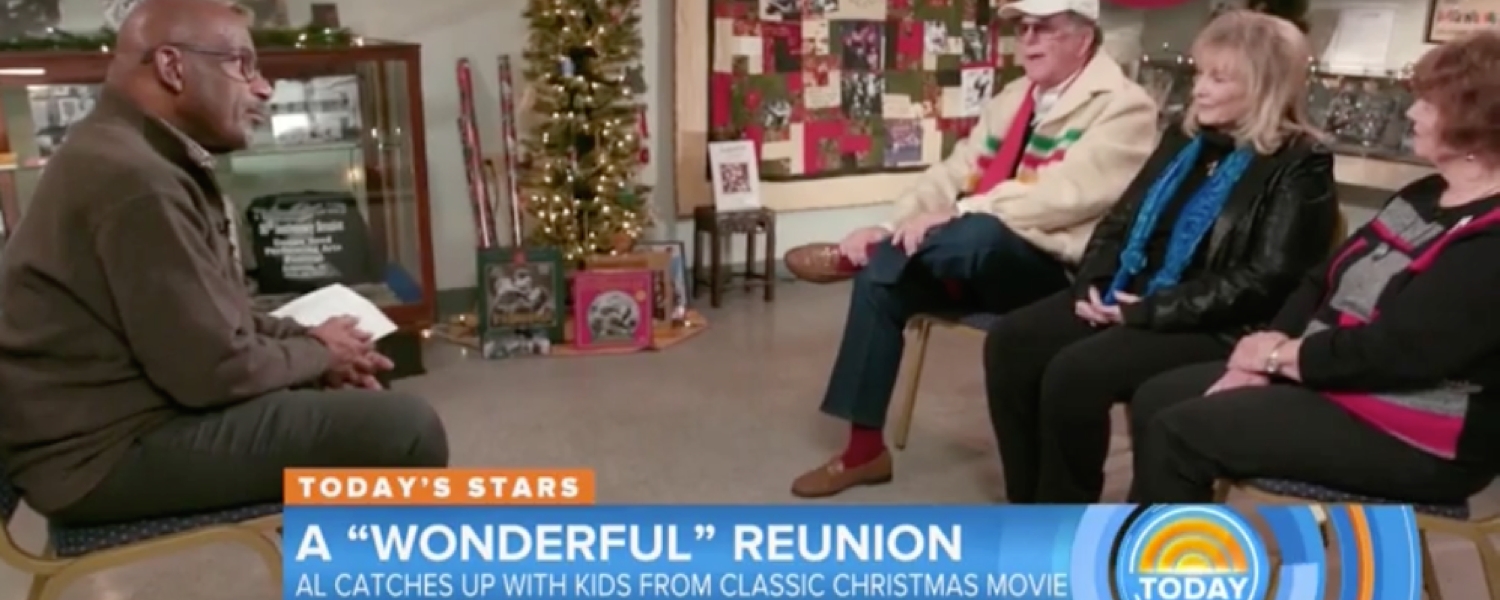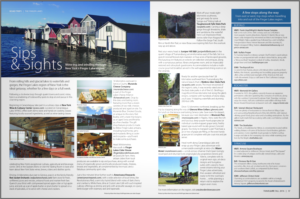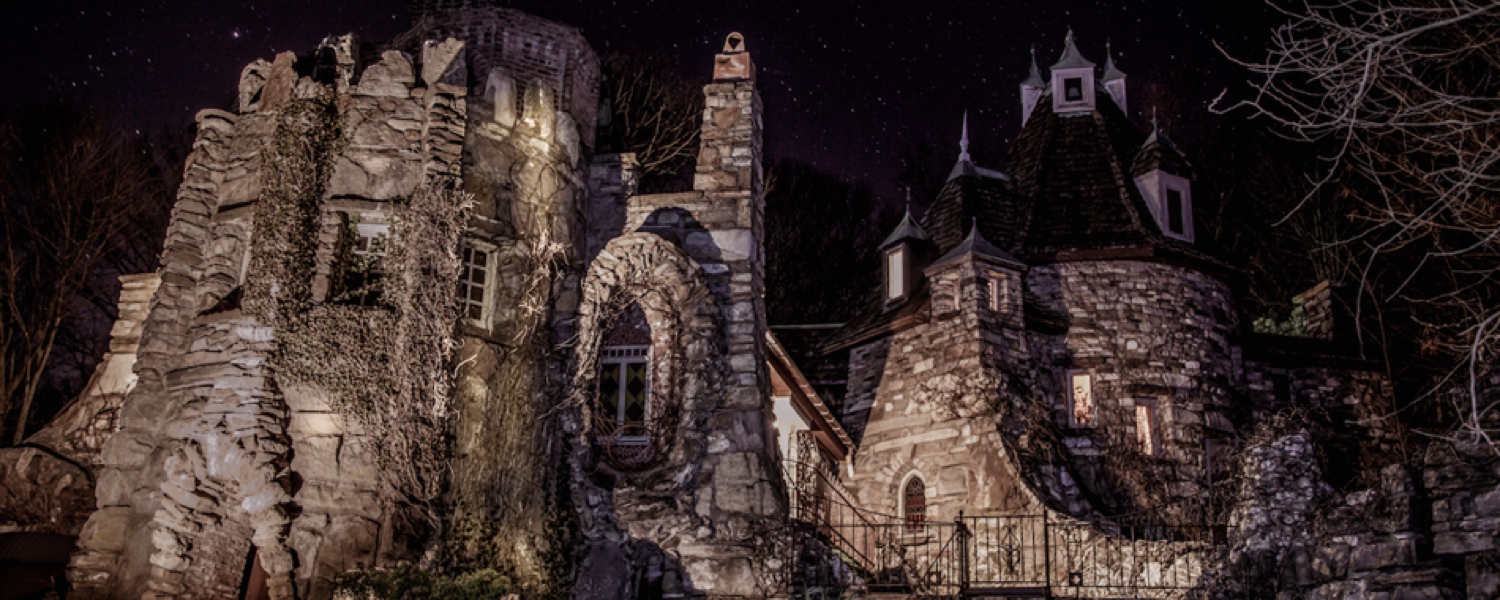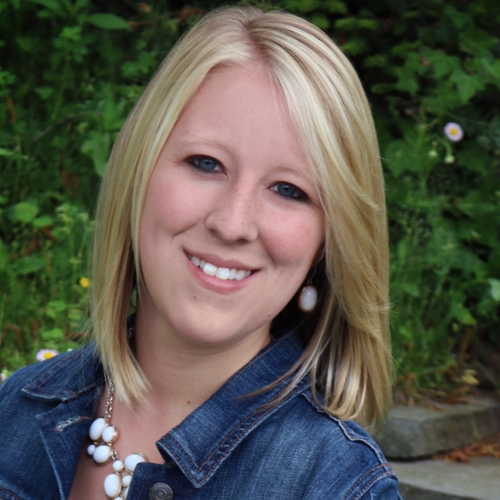Sarah Blackwell – Program Case Studies
Episode 28: Collaborative Programs Bring Regions Together, with Sarah Blackwell
In this episode, you will learn about programs that bring together counties, hotels, amusement parks, and more from Sarah Blackwell.
Sarah Blackwell joined BTI in 2013, bringing a fresh perspective, creativity and attention to detail to every client project she works on. A highly talented writer, she becomes the “voice” of many diverse clients for their stories and blogs — no easy trick. It takes tremendous imagination to write about winter attractions when it’s eighty degrees and summer outside. Or to write as the “voice” of a season. There’s also the constant need to come up with new angles and pitch stories for clients, and Sarah hits the mark each time. She also finds, researches and implements new media. All this to help get our clients great exposure and effectively connect with their target audiences.
There’s nothing like working with travel and tourism giants Southwest Airlines and Disney to put real-world, “icing on the cake” experience on top of an education in journalism and public relations. Sarah had — and continues to have — a passion for PR, writing and storytelling. And because she worked with the best in the business in media relations, she knows just how to cultivate relationships with journalists full of mutual respect and benefit.
Sarah sums it up: “Pitching story ideas is about knowing who you’re talking to — knowing your client’s audience and finding compelling subjects.”
Thank you for joining me, Sarah.
Thanks for having me, Nicole.
Today’s teamcast will focus on collaborative PR, and how coopetition can drive greater results. As our listeners know, coopetition is a favorite subject for this podcast. Where competitors work together cooperatively to create programs bigger than they could do on their own. To help illustrate this point, Sarah will be sharing three case studies from her clients, providing our listeners with an overview of the PR program, some of the challenges, and then some strategies for creating successful programs. So, let’s get started with case study number one. Sarah?
Sounds good. So, the first case study that I want to talk about today is one that listeners may have heard on a previous podcast. It is about the Finger Lakes Regional Tourism Council, which is an organization that represents the entire Finger Lakes tourism region. That’s 14 counties, 11 lakes, and 9,000 square miles, and previously the organization, several years ago, did not have a formal title or a formal organization representing the 14 tourism promotion agencies, or the TPA’s. The county reps did get together for meetings but they didn’t have bylaws and a regional budget. They realized that if they banded together and began to invest in marketing and public relations programs together, they could drive visitation using a bigger umbrella brand of the Finger Lakes, instead of just calling themselves Ithaca, Watkins Glen or Cayuga County. Visitors don’t consider county lines when they travel. They want to come to the Finger Lakes and they’re not quite sure where, in that area, they want to go to yet.

Source: Pexels
[bctt tweet=”“Visitors don’t consider county lines when traveling.” – @SarahEBlackwell #WhyCollaborate #Podcast”]
So, what they did was they got together and formed a national public relations program that could promote, and think of the region as a whole. I’m sure a lot of our listeners read travel articles. Many of them are round up style pieces now. This program works to promote the Finger Lakes and look for really cool, unique angles, and opportunities to bring attention to the region. It inserts the Finger Lakes into some of those round up style pieces and brings attention to some of those exciting attractions within the region, regardless of what county they fall in, and really sees the destination as a real visitor would. The Finger Lakes is actually… since becoming this organization, this FLRTC, the Regional Tourism Council, they’ve been expanding their collaborative programming to other areas as well. They have an original website, they have collaborative social channels now, so on Facebook and Twitter, they are the Finger Lakes region. They have print pieces. It’s definitely brought value to all the participants who are involved in those 14 counties to establish themselves as part of this bigger brand.
So, just to give you a sense of what some of those results have looked like. We have gotten coverage, since starting this PR and marketing program, on everything ranging from Fall Foliage to women’s history, and sometimes even really strange topics like chefs slang, weird things said in professional kitchens, and re-purposed buildings. Like in Rochester, for example, we have this church that was converted into a bar, arcade, and burger place and that’s gotten coverage, and all of these little things still help push this bigger message of the Finger Lakes and drive interest to people who go, “Yeah I want to see that. I want to go to the Finger Lakes.” In 2016 we saw fantastic results. We saw 444 total media placements, and one of those was actually on the Today Show. We had this fantastic coverage with Al Roker who came to the Finger Lakes, did this awesome piece on the “It’s A Wonderful Life” Festival which was celebrating its 70th anniversary. He filmed it right in the “It’s A Wonderful Life” Museum which is in Seneca Falls. So, that was huge and even though it focused on one specific festival and one specific thing it really did push the entire Finger Lakes.
We also had 14 one-off press trips. So, those are other travel writers who are visiting the region, touring around, and the great thing about that is we build them itineraries that kind of bring them from place to place so they’re seeing more than just one county, or one area. We also have done desk-side visits in New York City. We’ve sat down with journalists and had a discussion with them about the Finger Lakes as a whole, and it doesn’t matter which of those 14 representatives go and sit with those those journalists. They’re talking about their county but they’re also talking about the region, the entire region, and overall the results have been over one billion impressions. So, this is a really great year for the Finger Lakes.
Wow, that’s fantastic. That was 2016, correct?
That was. Yeah, that was 2016.
Right. You know what else I think our listeners would benefit from learning is how the Finger Lakes Regional PR program is not only a collaborative between the 14 counties, but it’s actually a collaborative between our agency and a New York City agency as well. Can you talk a little bit about that?
Yeah, so the really cool thing is how this program is run. Like you said, the Finger Lakes hired a New York City PR firm to do this national public relations push. But they realized that they needed an agency in the region to help them administer this program. So, we work collaboratively with that New York City PR firm. We are the ones who are kind of on the ground in the region. We’re the ones who are working, liaising really, with those 14 county TPA’s to build itineraries, to communicate updates from the program. For example, when Al Roker came to visit, I actually met one of our New York City team members at the airport, picked her up. We drove to Seneca Falls together, spent the day working with the Today show team, the two of us. I had the benefit of knowing the area, and also having the car and bringing her, and then she had the benefit of having that relationship with the Today show, and together we were able to to pull off a huge day like that. But the other piece of it is just the support that we provide to the TPA’s as a whole.

[bctt tweet=”“All these little mentions push the bigger message, the destination.” – @SarahEBlackwell #WhyCollaborate”]
So, supporting the public relations program by posting on those social channels, and sharing articles out that the Quinn PR New York City team gets for us, sharing those out on the website, and doing some local coverage, local press releases, things like that. It really is a hand-in-hand effort and I don’t see how this program could function without both of those firms working together.
Yeah I think that’s just a really great example of collaboration, both on the client side but also on the agency side. So, thank you for expanding on that. Sarah, I know you’re also going to be talking a little bit about some challenges with each of these case studies as a way that our listeners can learn. Can you talk a little bit about what challenges there are in managing a program of this size?
Yeah, definitely. There are a lot of moving pieces when it comes to a program like this. Essentially, with this one account, I have 14 clients to answer to, and sometimes that means that I need to be empowered to make decisions for the good of the program and the good of the region. So, for example, when a writer says, “I would like to visit the Finger Lakes region.” We send out their request to all 14 of those county TPA’s and say, “This is the writer, this is what they’re interested in. Who would be interested in hosting them?” And sometimes I get seven or eight counties that respond to me wanting to host this one writer and they’re only visiting the region for three days, and I have to make decisions where I say to people, “I’m sorry. I cannot bring the writer to your county at this time. They will be visiting X, Y, and Z instead.” And those are hard decisions to make. But that is something that was communicated ahead of time and that we were empowered to do as sort of this administrator of the program and it happens as well when we’re trying to figure out to people to go to New York City and meet face-to-face with the media.
Sometimes it’s just a case of looking at who’s gone, who hasn’t, what topics have been covered, where the holes are and making sure that there’s a fairness to this entire program. On the flip side of that, I think our clients know that it’s also on them to respond. If I send out an ask and 12 people respond, and two of them don’t, chances are those two people are not going to be included in that specific project, or ask, or whatever I’m looking for. So, part of it is also just them staying on top of requests and making sure that they’re looking at the bigger picture, and responding to me, and getting what I need on time, on deadline.
So, it’s a two way street?
It is, absolutely.
Yeah, that’s great. I know you have another case study that you want to share with us.
I do, it is called the Cross Border Showcase Travel program and it runs a little bit differently than the Finger Lakes program does. This, actually, was a program created, specifically, to talk to Canadian visitors in the the golden horseshoe area. So, that Toronto-Ontario, Golden Horseshoe where you would cross the border in the Buffalo, Niagara Falls area, and basically Visit Rochester created this program years ago and decided that… they realized that people were crossing the border, doing some shopping in Buffalo, turning around and heading back. They weren’t staying the night and they weren’t really exploring deeper into New York State. So, they developed this program called Cross Border Showcases to push people past that Buffalo/Niagara area, to send a message that there is more to do in upstate New York, and the reason that this program isn’t as cut and dry as the Finger Lakes is that anyone can buy into it. Anyone from western New York, to the Finger Lakes, to Central New York, to the Hudson Valley. So, across New York State can buy in and they are considered partners, and those partners can be counties but they can also be hotels, or single attractions like Darien Lake Amusement Park, for example.
So, there are different levels. There are different constituents, and stakeholders, and different ways that you have to talk about each of them and they all have different priorities too. The hotels obviously want people to stay overnight. The county’s just want them to visit their county, so they don’t really care which hotel or which attractions they visit. Darien Lake, for example, wants to get people into the amusement parks. It is a whole different beast.
The other thing about this program is that it’s produced by three different agencies. It’s collaborative in terms of the partners and in terms of what we call producers. So, where we’ve worked with that New York City PR firm on the Finger Lakes, we actually work with a firm… another two firms, one that produces a website and manages the social channels, and handles all design and advertising. a third company which is in charge of a radio show, and then our company which handles all content and the public relations portion of the program. So collaboration it is is really in every piece of this program.
It’s interwoven, through and through.
Absolutely. But the results, because of that, have been, again, fantastic. There was an article, for example, that we landed in Travel Life magazine, it’s a Canadian magazine, and it was called “Sips and Sights: wining and winding through New York’s Finger Lakes region” and this it was this beautiful two page spread and it mentioned 17 different places in upstate New York. So, 17 of those partners who participate in this Cross Border Showcase program were included in a single article and it’s because we were able to host that writer through this program with one budget. She only had to talk to one person, so myself as a public relations professional, and I was able to make that trip extremely easy for her because I built the itinerary using input and help from all of those partners, and was really able to to produce this this beautiful PR placement that never would have happened had we not built a program like this.

[bctt tweet=”“Collaborative programs are better for partners and for the media.” – @SarahEBlackwell #WhyCollaborate #Podcast”]
I think that’s a really good point to that you just illustrated and that is, not only is that collaborative program are better for the partners who are in it because they’re leveraging resources, multiple resources, but also it’s better for the experience from the journalist perspective in terms of having to navigate such a vast area, geographic area, and being able to see 17 different sites including those in her stories but only needing to deal with one point of contact.
Oh yeah, definitely, and we’ve seen that happen. Now, that we’ve built those relationships with journalists we see them come back to us and say, “Hey I’m working on a round up on this particular topic. Do you have anything that fits?” Because they know that we represent this vast area of New York state and it’s so easy for them to just go straight to us and say, “We know you’ve got all these partners. What can you give me? I need one more thing for this article.” Or, “One more little piece.” Or, “Can you set me up with an interview with this person?” To have those connections is invaluable for us as a PR agency. So, also in 2016, for this program, because I did mention that it’s not just public relations, there are so many other components. We did see over 55,000 Canadian based visitors come to the Cross Border Showcase website. We delivered a print insert to over 600,000 homes in Ontario. We had recipients of an e-blast, over 100,000 recipients of this e-blast featuring just our partners. 10,000 weekly listeners to our radio show, thousands reached on social media, and over 1,000,000 PR impressions in that 2016 year.
So, just having that collaboration and everyone working toward that single goal really did see a lot of results, and in this program it was great because it was just towards that single geographic market. So, we really were able to reach them, to infiltrate that message into their area.
That’s fabulous.
Along with this, there are a few challenges, definitely. A couple being just keeping up with everything, keeping up with all of our partners internal changes. When partners buy in, we tend to be given a single point of contact and if that person leaves the company, or moves positions, or changes email, we are not always the first notified. So, part of it is just keeping up with the partners, their changes, and also their deals, and specials, and the types of things that they want to promote. The tourism industry moves fast, new things open, events are happening. So, that asset management, is kind of a full time job in this program. But also keeping up with each other in terms of the three agencies that produce this program, because we each have our own marching orders, and so we need to remain in constant communication with each other to make sure that we’re being consistent on our messages. For example, for this program we created a few years ago this slogan called “Your dollar goes farther if you do.” And so, we needed to sit down and brainstorm as a three agency group, this producer’s group, and then start to push that message throughout all of our channels and just to make sure we’re on the same page.
That’s great. Yeah, I think that’s just really interesting on both sides. You’re talking about needing to communicate directly with partners but then also needing to communicate between the agency team, and what I think is really interesting is just how much can be done in these collaborative programs. But also just how intricate it all is as you start to execute on it.
It definitely is, and the Finger Lakes, they’re a region whether we’re collaborating or not. The Cross Border Showcase program is only working if we’re communicating. So, if we’re not communicating we are failing. It’s not going to go anywhere.
Right, great point, and Sarah, I know you have one more big program to talk to us about as a third case study.
I do and this one is actually, I think, one of the most fun projects I get to work on because I just love the topic so much. It is the Haunted History Trail of New York State and it is literally 100% collaborative. It would not exist without the participation of partners because the Haunted History Trail is a very niche interest, a very niche market. It is solely about ghosts, haunted locations, and the paranormal and I just think that that’s such a cool topic to work on. But the Haunted History Trail, in this program the county buys into the program, so whatever that TPA is, they’ll be the ones who buy into the program. Then they provide us with a list of their haunted assets, their haunted attractions. The program relies on its website and its print brochure as the hub for everything. So, this information, like where to book a haunted tour, or when you can reserve a paranormal investigation, it doesn’t exist anywhere else. A lot of times it’s not featured on… if it’s a hotel, for example, it’s not featured on their website because they don’t want to scare guests away who aren’t interested in haunted.

[bctt tweet=”“The Haunted History Trail of NYS only exists because competitors came together.” – @SarahEBlackwell #Podcast”]
So we are the sole owners of that content, essentially, and content development is a big part of this program. But in addition to that, we run a national public relations program, we manage social channels on Facebook, Instagram, and on Twitter, and actually on Pinterest as well. So, we have Pinterest in this one, and we promote the events that are happening at location which, come May through October, there are just a plethora of events happening all across New York in relation to this haunted market and we push them out via Facebook, and online advertising, and on occasion, we assist with a groups program as well. So, that’s for the motor coach market that wants to do… some of them want to do the surprise tours, or out-of-the box tours. Just these things that haven’t been done before. So, the haunted aspect of this program really catches their attention. That’s the unique market that they don’t really get to do a lot of motor coach tours around.
For our listeners sake, just how large is this trail?
This trail encompasses 32 counties across upstate New York. So, it does not include New York City right now but it does include Long Island and it does include everything from the Hudson Valley into the Adirondacks. It touches Thousand Islands, Central New York, the Finger Lakes, Western New York, and into that Chautauqua/Allegheny region. Almost every region of New York State is touched and I believe we have over 65 trail stops right now. It’s an enormous program.
It is.
And it is young. It’s actually only in its fourth year. So, there’s still this huge untapped market right now for haunted, and it’s a really cool opportunity because we don’t… there are a lot of media who don’t know it exists, this is a totally brand new thing and we’re unique in having that. So, like I said, it’s a lot of asset management, it’s a lot of work, it’s a lot of communicating with the partners, but it’s definitely paying off. In 2016, which was actually the first year that we had a public relations component to this, we had 300 media placements that mention The Haunted History Trail. We had 36 direct mentions on social media, and we had over 30 million impressions. So, it’s such a cool beast right now. People are really excited to talk about it and it’s getting picked up in, sometimes, unique places. We had an article on Vine Pair, which focuses on wine and beer solely, and they did a round up of haunted bars across the US and we made that list.
People are finding really cool ways to include mentions of this trail as well. But none of these results would have happened, nothing would have happened without collaboration because these programs… this program only exists because competitors chose to come together. So, that’s a pretty big deal.
Absolutely. Competitors who didn’t even realize they had something in common until Kelly Rapone, who we did interview on this podcast before, came up with the idea to put this trial together.
Right, she really is a trailblazer in that sense, no pun intended.
Yeah, that’s right.
There are definitely some unique challenges, though, to this program and things we have not mentioned in the past. But in this case, going back to what I said about the partners, they don’t always have that haunted content on their website because they don’t want to scare away visitors who aren’t interested in the ghost side, the haunted, spooky side of things. But that also means that they haven’t… they need to make sure that they’re communicating to their front-line staff. What is the haunted attraction here? What is the haunted aspect? If they’re saying, on our website, “We’ll offer ghost tours to visitors who book ahead of time.” Then that’s all well and good until the visitor calls up that hotel, or restaurant and says, “I’d like to book a ghost tour.” And the hostess on the phone goes, “We’re haunted?” So, there needs to be some training in terms of the front line staff. It’s great that the county is buying in and the owner of that business is all on board, but if you haven’t trickled down that training and that communication to every person who is participating, and could get a visitor call, then it’s not going to work.
I think that’s just a really great point as well because we talk, as marketers, we’re talking about basically pitching an experience, or sharing, telling the story about the experiences that can happen within a destination. But then making sure that those on the front lines, and those people that are actually interacting with the visitor understand what that experience is all about is so important.
It is.
Yeah, to our job as well as to their job, right?
It is, and the moment you get a visitor who calls up the place and they say, “I didn’t know we were haunted.” That’s the moment your program starts unraveling. So, it’s essential that that communication goes all the way down the line.
That’s a really good point. I’m hearing some themes through all of these case studies, and Sarah, with all of your experience in working on these collaborative programs, I know you have some key strategies that you can share with our listeners that will help them be successful in any kind of collaborative programs that they might be working on.
Sure. Yeah, I have a couple. The first one would be when you’re thinking about creating a program like this to clearly define what the program is, and what the goals of that program are. So, first kind of figure out what those threads are that that tie competitors together. Are they in the same industry? Can they tell a common story? Or maybe they have geographic or locational ties. So, figure out why this program should exist. Then, also, what is the benefit of working together? Once you know how you can collaborate you can start figuring out what the common goals are. Is it media attention? Is it driving overnights? Is it having people request a specific print piece or driving them to a website? What does success look like to you? And that kind of rolls into my second suggestion which is to lay out the expectations of the program. So, if the goal is media coverage, make sure that every single partner knows that that is the goal and that a win for the program is a win for everyone.
For the Haunted History Trail, for example, if it’s mentioned in an article and it directs back to the Haunted History Trail website, just because that partner isn’t mentioned in the article doesn’t mean it’s not a win. Because that link can drive people back to that website which could cause them to explore more, to learn about new attractions and things within that program. So, if you outline that ahead of time you’re less likely to be dealing with unhappy partners who are saying, “I wasn’t featured in anything this year.” And you can say, “Yes you were because you were a part of this program and this program was featured.” And that is a win for everyone.
The other piece of this, and we’ve said this a lot throughout this podcast, is to figure out how you are communicating with everyone. So, develop a process. Maybe email is best. I know that, especially in this industry, we’re always on our email. So, that might that might be the best way to communicate out wins. But, are weekly updates the best way to do things? Is that too much? Maybe you should talk to people monthly, quarterly.
Part of it is how much do they need to hear from you, and how much do you need to hear from them? So, I need to know what’s going on at all times. If there’s an event coming up, I’m happy to get five or six emails a day from my program partners, just to know what’s going on. But for them, I try to communicate things out at least weekly, but sometimes it’s a quarterly report, or a monthly newsletter. Whatever way works best for them to know that these are the the stepping stones, these are the accomplishments that are happening behind the scenes. The other thing I would suggest, and this has worked out for us with a lot of the programs we work on is to have some sort of central administrator. So, the Finger Lakes is an equal partner. There are 14 equal partners in this program, but as equal partners it would be very difficult for them to make decisions on behalf of the region because they have their own stakeholders and partners they answer to on a county level.
So, for us, they’ve empowered our firm, Break The Ice Media, to be that admin and to keep everyone in the loop and execute on the program, and to make decisions for the good of the entire group. The most important is just to talk to the frontline staff, the partners, the administrators, the executors of the program and make sure that everyone knows the details. That every single person is on the same page. So, it is communicate, communicate, communicate, just constantly.

Source: Pexels
[bctt tweet=”“Communicate, communicate, communicate. Constantly.” – @SarahEBlackwell #Podcast”]
I am hearing a very solid theme through this whole podcast, communication is key and I think those are a great way to kind of round up those case studies and everything that you’ve learned with those five steps that you just outlined. Are there any final thoughts you’d like to share with our listeners on the topic?
Yeah, just a couple of quick things. When you’re creating a program like this, think about your customers. Consider how they might be viewing a product. Visitors don’t see county lines, they don’t see any boundaries. For example, if they’re traveling to New York state, they just want to come, they want to visit, they want to experience. So, think about how they see your product and how you can kind of break those invisible boundaries to talk to your customer in the right way and collaboration can be used to create something new. For example, the statewide haunted trail that didn’t exist before Kelly Rapone saw that opportunity and created it. But it taps into this great niche market that we weren’t reaching previously, and that’s awesome. We’ve reached a totally different set of consumers that we may never have talked to before. The other thing that’s awesome about programs like this is to just pay attention to how it’s running, and learn. Soak up all the information that you possibly can. Every time I work with a new client, I learn something. Every time one of our programs takes on a new partner, or we collaborate with a another agency, I learn something, and that’s fantastic.
It creates stronger products. But coopetition can also create smarter marketers, and that is just so exciting to me as someone who is just constantly trying to soak in all the information that I can. Not to mention that conflict, should conflict arise, it can be a good thing. It can push you out of your comfort zone, it could lead you to discover something new, or to to create a process to do things in a new way, and so even if a collaborative program doesn’t work out, and it may not, you’re guaranteed to learn something from the experience that you can take back for next time and create a program that will work and that will succeed.
That is awesome advice and a great way to wrap up this team cast episode about collaborative PR programs and coopetitions, and I appreciate you taking your time this afternoon, Sarah, to share with us today.
Thank you, again, for having me Nicole.
We value your thoughts and feedback and would love to hear from you. Leave us a review on your favorite streaming platform to let us know what you want to hear more of. Here is a quick tutorial on how to leave us a rating and review on iTunes!







